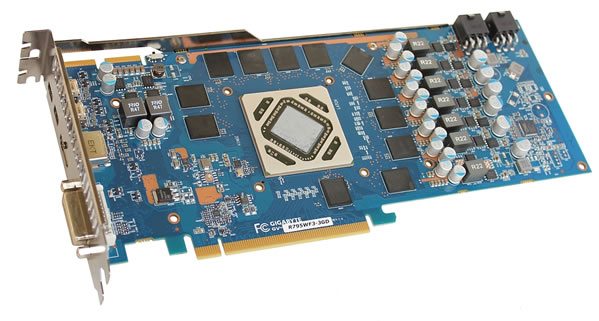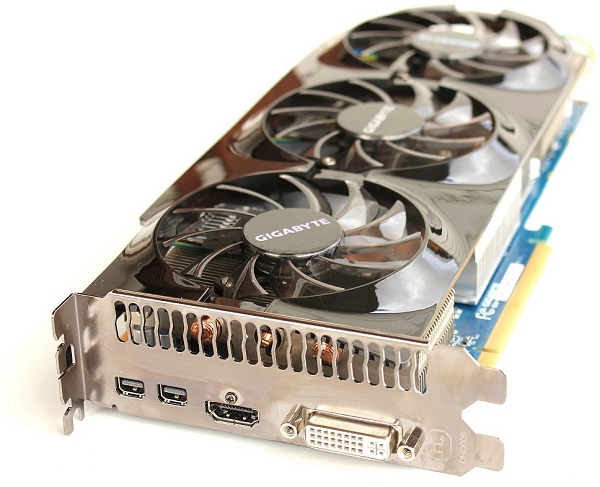AMD ended 2011 on a high note, unleashing the market's fastest single-GPU card and beating its adversary to the next-generation graphics yet again.
The Radeon HD 7970 outpaced the GeForce GTX 580 by over 20% in our tests and that achievement is made even sweeter by the fact that Nvidia's response is still months away. This lack of competition has granted AMD the confidence to stamp its flagship graphics board with an uncharacteristically high retail price of $549 – territory usually commanded by Nvidia.
Despite offering "only" 42% more performance, the HD 7970's list price is 60% higher than the 6970's. What's more, the new card's actual retail rate is more like $600, roughly $100 pricier than the GTX 580.
That's a tough sell in our opinion, and with limited supplies, prices presumably won't fall until Nvidia reclaims its stomping grounds with Kepler later this year. With that in mind, value-conscious enthusiasts seeking a high-end card will likely find better solutions than the HD 7970.

Conveniently enough, AMD offers a potentially valid alternative with its Radeon HD 7950, which is essentially a lower-specced and lower-priced version of the HD 7970. The HD 7950 is set at $419 for the 1536MB version, while the full 3072MB variant is $449. Although it's currently possible to find a 3GB model for $449, you can expect to pay closer to $500. For example, the Gigabyte "GV-R795WF3-3GD" card we're looking at today (also called WindForce 3 in some markets) retails for $490, touting several noteworthy upgrades.
Gigabyte has redesigned the PCB and included an upgraded cooler that is meant to lower temperatures and improve overclocking. Considering the HD 7970's respectable performance, we expect a solid showing from the HD 7950. Before we hit the benchmarks, let's pop the hood and have a closer look at Gigabyte's HD 7950 offering.
Like its snappier sibling, the Radeon HD 7950 measures a typical length for today's high-end graphics cards at 27cm (10.6in). For example, the HD 6950 also measures 27cm long, as does the GeForce GTX 580.
The HD 7950 GPU is fabricated on a 28nm process, making it possible for AMD to squeeze 4313 million transistors into a 352mm2 die.
By default the GPU core runs at 800MHz, 14% lower than the HD 7970, and the GDDR5 memory operates 9% slower at 1250MHz. These are the same core and memory frequencies as the HD 6950. However, Gigabyte's HD 7950 is overclocked to 900MHz and 1250MHz. The 13% increase in core clock speed should have a positive impact on performance.

Whereas the HD 6950 utilized a 256-bit bus, the HD 7950's is 384-bit, boosting the available memory bandwidth from 160GB/s to a considerably healthier 240GB/s.
As you'd expect, the HD 7950's core configuration is cut down from the HD 7970. The speedier card has 2048 SPUs, 128 TAUs and 32 ROPs, while the HD 7950 packs 1792 SPUs, 112 TAUs, and the same 32 ROPs (13% less SPUs and TAUs).



What makes Gigabyte's iteration unique is its WindForce 3X solution with "Triangle Cool" technology. The cooler employs three 75mm ultra quiet PWM fans connected to a custom shroud. Under these fans is a massive heatsink consisting of three main parts connected by 8mm copper heatpipes.
At the heart of this setup is the biggest block which has a unique RAM heatsink to cool the GDDR5 modules. This heatsink also features Triangle Cool technology, which uses a series of fins and triangular clip modules to better direct airflow over the heatsink.
Gigabyte says its Triangle Cool technology can reduce temperatures by up to 35% over traditional designs, so we're keen to see just how cool this HD 7950 runs.

To feed the card enough juice, AMD includes dual 6-pin PCI Express power connectors. This is the same setup used on the HD 6950, 5870, 6870 as well as the GTX 580 and 570 graphics cards.
Naturally, the HD 7950 supports Crossfire, so it has a pair of connectors to bridge two or more cards. The only other ports are on the I/O panel where you'll find a dual DL-DVI connector, a single HDMI 1.4a port, and two mini-DisplayPort 1.2 sockets.
All HD 7950s support a max resolution of 2560x1600 on up to three monitors. With a multi-stream hub, using the mini-DisplayPort 1.2 sockets, the card can power up to six screens.
